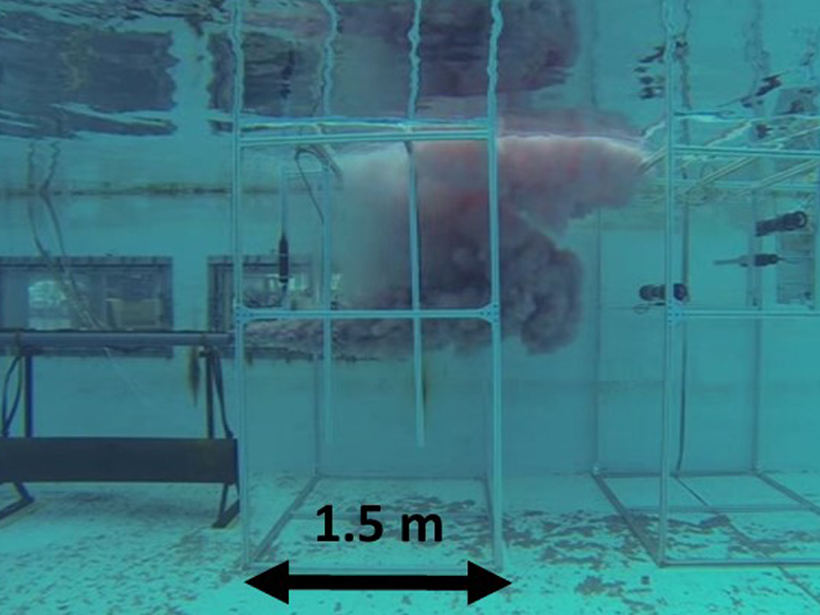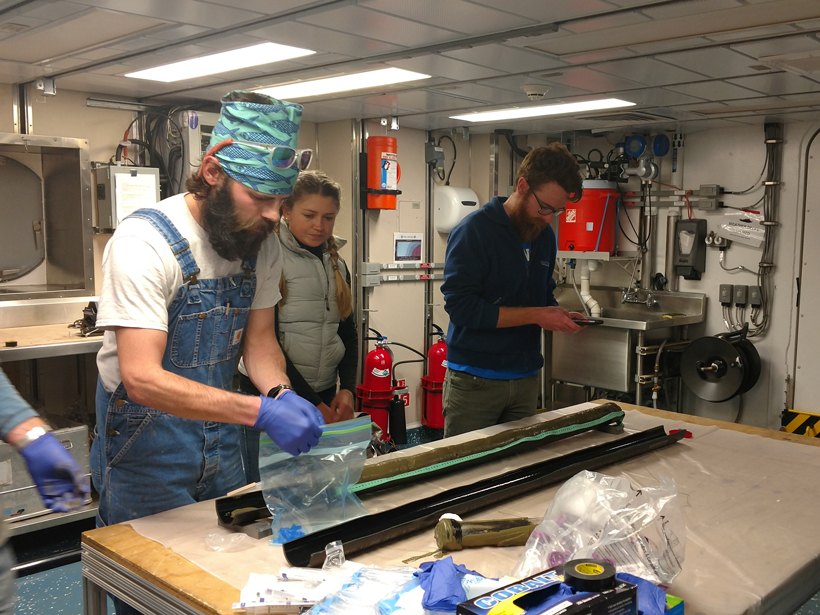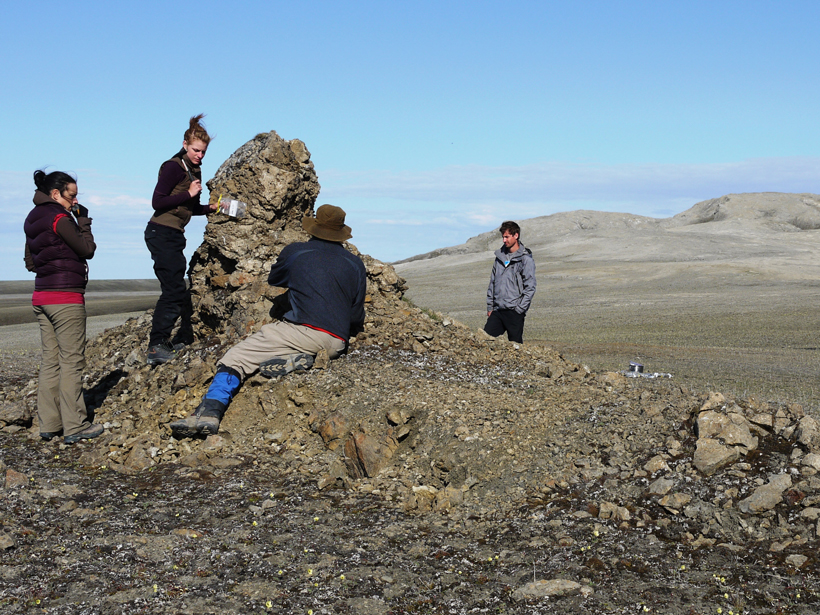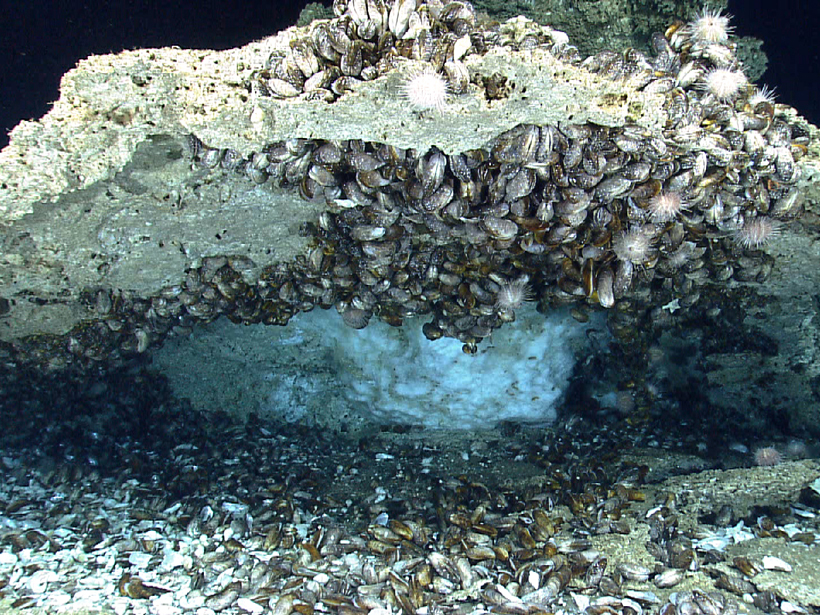Laboratory experiments suggest that underwater gas eruptions—due to the venting of gas hydrates, for example—could trigger the formation of layers of suspended sediment in the ocean.
gas hydrates
Forecasting Geohazards in the Age of Gas Hydrate Exploitation
A curious breath-like pattern exhibited by gas hydrates may help forecast hazards associated with extracting them from the seafloor.
The Underwater Behavior of Oil and Gas Jets and Plumes
Exploring how the multiscale interaction between underwater oil and gas plumes and the environment impacts plume composition and trajectory.
Where Do Natural Gas Hydrates Come from and Why Should We Care?
A new generation of models, laboratory, and field studies is helping scientists answer important questions about this mysterious substance.
Exploring Methane Gas Seepage in the California Borderlands
Early-career scientists aboard the 2016 UNOLS Chief Scientist Training Cruise explored recently reactivated underwater methane seeps in the San Diego Trough.
Ancient Methane Seeps Tell Tale of Sudden Warming
Newly discovered rock mounds left by ancient methane seeps give scientists clues that methane on ancient ocean floor was released by ancient global warming.
Could Subsea Methane Hydrates Be a Warming “Tipping Point”?
The authors of a recent paper in Reviews of Geophysics answer questions about the potential for subsea methane hydrates to contribute to global warming.
Asphalt Volcanoes Erupt in Slow Motion
Natural asphalt seeps on the ocean floor provide a stable home for diverse marine life that sequesters greenhouse gases.
Rising Temperatures Release Methane Locked in the Seabed
New research shows that when ice in the seafloor melts, single-cell organisms metabolize the methane released, preventing the greenhouse gas from reaching the atmosphere.
Rapid Gas Hydrate Forms Pockmarks in Nigeria's Seafloor
The seafloor in deep water regions off the coast of Nigeria is speckled with pockmarks that scientists suggest were mainly made by the rapid formation of gas hydrate.









